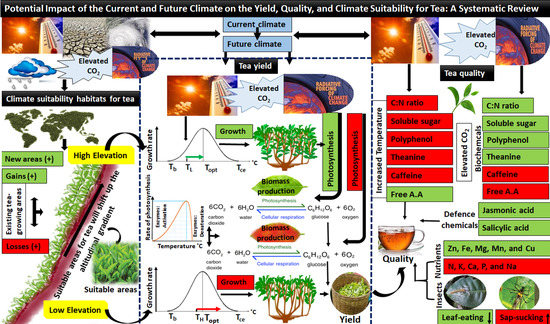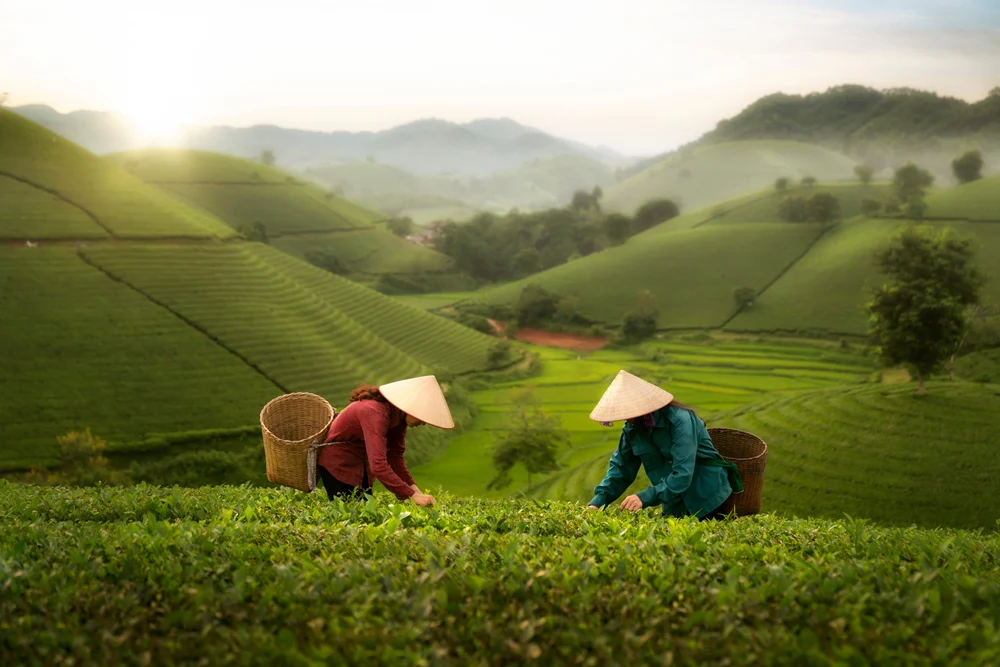Climate change poses significant challenges to tea production and quality across the globe, impacting various aspects of the tea industry. Here’s an overview of how climate change affects tea cultivation, yield, and quality based on recent findings.
Impacts on Yield and Quality
- Temperature Changes: Rising temperatures can lead to increased yields in some regions due to elevated CO2 levels, which enhance photosynthesis. However, this positive effect diminishes at higher temperatures that exceed optimal growth conditions for tea plants. For instance, while higher temperatures can stimulate amino acid production, they may also lead to increased polyphenol levels, resulting in more bitter teas.
- Precipitation Variability: Erratic rainfall patterns can lead to both droughts and excessive rainfall, negatively affecting tea quality. Drought conditions can reduce yields by up to 30% in regions like Kenya, while heavy rains can dilute the concentration of beneficial biochemicals in tea leaves, leading to lower quality.
- Biochemical Fluctuations: Climate change influences the concentrations of key compounds in tea leaves. Studies indicate that while elevated CO2 can increase soluble sugars and certain polyphenols, it may also decrease caffeine and free amino acids. This variability complicates the relationship between climate conditions and tea quality, as consumer preferences depend on specific biochemical profiles12.
Extreme Weather Events
- Increased Pest and Disease Pressure: Warmer temperatures and changing precipitation patterns can exacerbate pest populations and disease outbreaks, threatening tea plants’ health and productivity. For example, elevated CO2 levels have been linked to increased susceptibility of tea plants to pests and pathogens.
- Unpredictable Weather Patterns: Extreme weather events such as frost, cyclones, and floods can devastate tea crops. For instance, unexpected frosts can damage new growth that is vulnerable due to climate-induced changes in growth cycles.
Regional Variability
- Differential Impact by Region: The effects of climate change are not uniform across all tea-producing regions. For example, studies predict a significant reduction in the suitability for tea cultivation in countries like Kenya (up to 26% by 2050) and Sri Lanka (nearly 30% by 2070) due to changing climatic conditions3. Conversely, some cooler regions may experience temporary benefits from rising temperatures if they remain within optimal ranges.
- Shifts in Tea Production Areas: As traditional tea-growing regions become less suitable due to climate change, there is a trend of shifting production areas toward higher altitudes or different geographic locations that may offer better growing conditions.
Adaptive Strategies
- Sustainable Practices: To mitigate the impacts of climate change, experts recommend adopting sustainable agricultural practices such as agroforestry, integrated pest management, and soil restoration techniques. These practices not only enhance resilience against climate variability but also reduce the environmental footprint of tea production.
- Research and Innovation: Ongoing research into climate-resilient tea varieties and innovative farming techniques is crucial for adapting to changing conditions. This includes exploring genetic diversity within tea plants that may offer better resistance to climate stressors.
Conclusion
Overall, climate change presents a complex array of challenges for the tea industry, affecting both yield and quality through temperature fluctuations, precipitation variability, and increased pest pressures. While some regions may experience temporary benefits from warmer climates, many face significant risks that could threaten their viability as tea producers. Adopting sustainable practices and investing in research will be essential for navigating these challenges and ensuring the future of global tea production.






